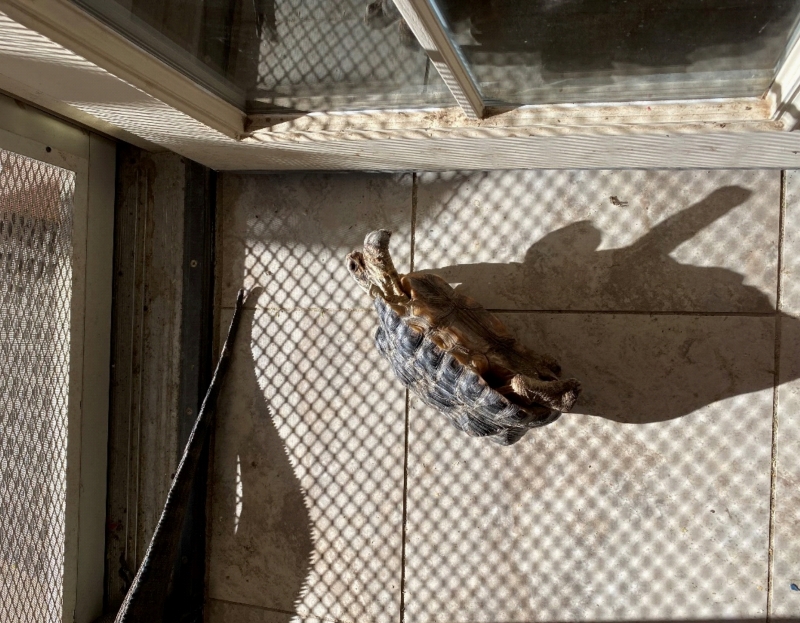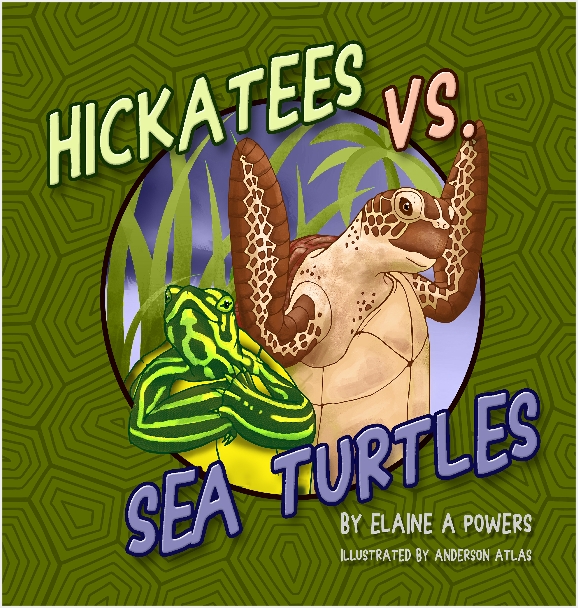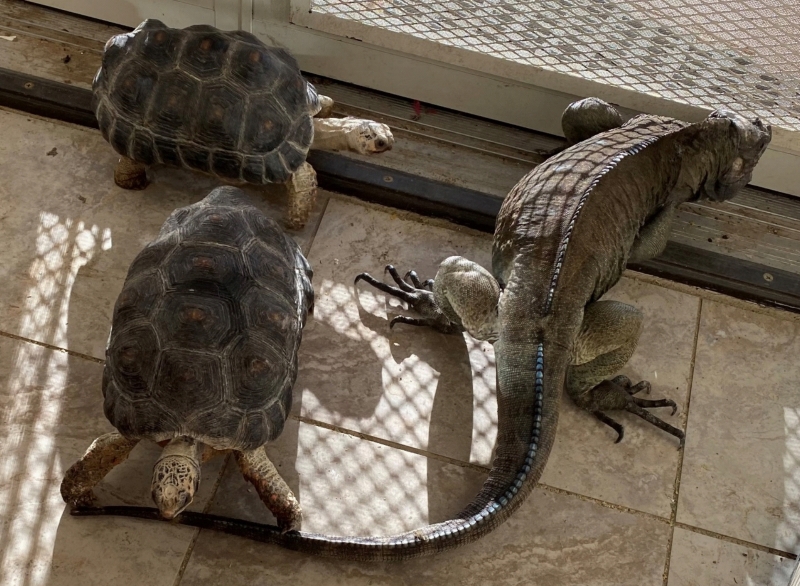Red-foot tortoises (Chelonoidis carbonarius), like Gladiola, are omnivores, which means they eat meat, as well as vegetables and fruits. Being tortoises, they don’t run down prey like a wolf after a deer. No, they look for slow moving animal tidbits or carrion. Any opportunity for some protein should be explored, as shown by Gladiola here.
Rango Rhinocerous Iguana showed great tolerance of Gladiola’s nibbling. Fortunately, Gladiola didn’t take too big a bite. Merely moving the tail out of the way was sufficient.
However, Gladiola thought Rango’s tail was worth another taste a few minutes later.
Despite Rango asking Gladiola nicely to cease and desist, she didn’t. She pursued that tail and chomped down on it one too many times. With a flick of the tail, the errant tortoise was sent flying, ending up on her side.

That’s what you get when you bite the wrong tail!
Interested in learning more about tortoises or turtles? Check out our books by clicking on the link.

